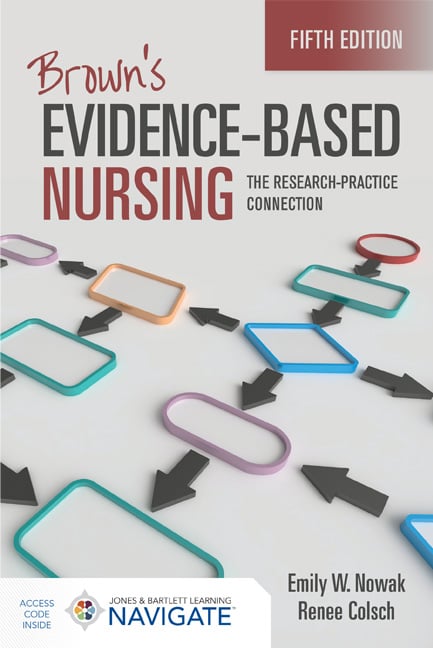Teaching the Difference Between Statistical and Clinical Significance In Nursing

Learning and understanding the difference between statistical and clinical significance is important for leaders in nursing. Therefore, there are a few distinct ways this should be taught in the classroom. Read on to learn more about how to teach this complex topic and to make sure your students walk away with a strong understanding of the difference between statistical and clinical significance and the meaning behind each.
Understanding Statistical Significance
A National Institutes of Health study from 2021 says the following: The main difference between statistical and clinical significance is that the clinical significance observes dissimilarity between the two groups or the two treatment modalities, while statistical significance implies whether there is any mathematical significance to the carried analysis of the results or not.
In other words, statistical significance refers to the likelihood that the results of a study or experiment are not due to chance. In nursing, statistical significance is often determined through the use of statistical tests, such as t-tests or chi-square tests. These tests help to determine whether the observed differences or associations between variables are statistically significant or simply the result of random variation.
Understanding statistical significance is important in nursing because it allows nurses to evaluate the validity and reliability of research findings. By understanding the statistical significance of a study's results, nurses can determine whether the findings are robust and generalizable to a larger population. This knowledge is crucial for evidence-based decision-making in nursing practice.
Exploring Clinical Significance
While statistical significance focuses on the probability of results being due to chance, clinical significance in nursing emphasizes the practical relevance and importance of those results. Clinical significance considers the impact of the findings on patient care and outcomes. It considers whether the observed differences or associations have meaningful implications for nursing practice.
In nursing, clinical significance is determined based on the magnitude of the effect size, the clinical context, and the patient's preferences and values.
For example, a statistically significant difference in blood pressure between two groups may not be clinically significant if the difference is too small to have any meaningful impact on patient outcomes.
Understanding clinical significance allows them to assess the practical implications of research findings and apply them appropriately to patient care. By considering both statistical and clinical significance, nurses can make informed decisions and provide evidence-based care.
The Importance of Distinguishing Between the Two
Distinguishing between statistical and clinical significance is crucial in nursing because it helps prevent misinterpretation and misapplication of research findings. While statistical significance provides information about the likelihood of results occurring by chance, it does not necessarily indicate the practical importance of those results.
By distinguishing between the two, nurses can critically evaluate research studies and determine whether the findings are relevant and applicable to their specific patient population. This distinction ensures that evidence-based practice is grounded in both statistical rigor and clinical relevance, leading to improved patient outcomes and quality of care.
Challenges in Applying Statistical and Clinical Significance in Nursing
Applying statistical and clinical significance in nursing practice can present several challenges. One challenge is the complexity of statistical methods and tests used to determine significance. Nurses may require additional education and training to effectively understand and interpret statistical analyses in research studies.
Another challenge is the variability in clinical contexts and patient populations. What may be statistically significant in one patient population may not hold true in another, making it essential for nurses to consider the clinical relevance and applicability of research findings to their specific practice setting.
Additionally, the reliance on statistical significance as the sole criterion for decision-making can lead to the neglect of other important factors, such as patient preferences and values. Nurses need to strike a balance between statistical and clinical significance by considering multiple sources of evidence and engaging in shared decision-making with patients.
Strategies for Enhancing the Integration of Statistical and Clinical Significance in Nursing Practice
To enhance the integration of statistical and clinical significance in nursing practice, educators can implement the following strategies:
- Provide comprehensive education and training on statistical concepts and methods, ensuring nurses have the necessary skills to critically evaluate and apply research findings to practice.
- Encourage nurses to actively engage with research literature and participate in journal clubs or research forums to enhance their understanding of statistical and clinical significance.
- Foster interprofessional collaboration between nurses, statisticians, and researchers to promote a holistic approach to evidence-based practice.
- Emphasize the importance of considering clinical relevance and patient preferences alongside statistical significance in decision-making.
- Encourage nurses to contribute to the research process by conducting their own studies or participating in research projects, allowing them to gain firsthand experience in applying statistical and clinical significance in practice.
- Incorporate innovative teaching tools such as a Digital Escape Room, found in Brown’s Evidence-Based Nursing, Fifth Edition.
By implementing these strategies, nurses can enhance their ability to integrate statistical and clinical significance into their practice, leading to improved patient care and outcomes.
Brown's Evidence-Based Nursing: The Research-Practice Connection
The new fifth edition of Brown's Evidence-Based Nursing: The Research-Practice Connection features an engaging learning experience for nursing students with a unique digital escape room.
Request Your Review CopyRelated Content:
